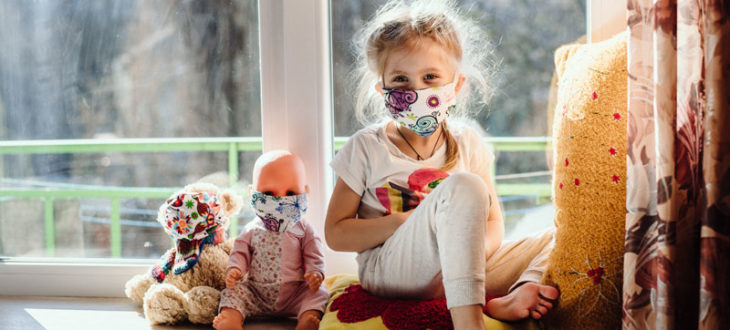As we return to school at FLS, we will be required to wear masks, per Gov. Walz’s mandate for all of Minnesota.
We will be wearing masks during the following times:
- Arrival
- Departure
- Transitions (walking to and from class, to the gym, to the library, etc)
- In common spaces (lunch room, chapel, etc)
- Due to the community increase in COVID, we will wear masks in the classroom.
Please remember that all masks must be FLS appropriate. Masks must not have inappropriate messages, graphics, political statements, or themes that are contrary to our school’s mission.
Below are 7 tips for you to help your child learn about masks and feel more comfortable with masks so they are ready for the first day of school. The information below is from an excerpt from an article by Children’s Health. The full article can be found here: https://www.childrens.com/health-wellness/7-tips-to-help-your-child-wear-a-face-mask .
1. Explain to your child why face masks are important
Start by educating your child on why wearing a face mask is important to help prevent the spread of COVID-19. Use age-appropriate language to talk to your child about coronavirus.
For younger children, stick to simple, concrete terms. “You can say things like, ‘Wearing a mask helps keep us safe and keep others around us safe,’ or ‘Wearing a mask can help protect us and others from germs,'” says Faubel. “It’s helpful to be consistent in how you explain this and saying this message over and over.”
For older children, you can share more information and refer to trusted resources such as the CDC for illustrations that show how masks can help prevent the virus from spreading.
“Public health measures, such as wearing a mask, are essential to getting the spread of the virus under control,” says Dr. Kahn. “It is important to empower children with the knowledge that they can potentially safe a life and that they are playing a vital role in fighting the pandemic.”
2. Normalize face masks through play
Children learn through play, and this can also help them process their feelings. Give your child a mask for their favorite stuffed animal, sew a matching mask for a doll or draw masks on characters in coloring books. Practice putting the mask on their toy and consider having your child practice wearing the mask with the toy to normalize the situation.
Listen to what your child is saying as he or she plays; it’s a great way for parents to learn how their child is understanding or feeling about a situation.
3. Provide fun and colorful mask options
As face masks become more common, it’s getting easier to find kid-friendly patterns and options. Look for cloth masks that feature your child’s favorite color or character. You can even have your child help choose a design, so they feel a part of the process.
“If possible, have a few different mask options for your child, so they can decide which mask they want to wear that day,” suggests Faubel. “This can help prevent any battles when asking them to put on their mask.”
When looking at kid-friendly mask options, make sure you choose a cloth face covering that is easily washable and sized for your child’s age.
4. Ensure your child’s mask fits correctly and comfortably
Making sure your child’s mask fits correctly and comfortably will help prevent them from fidgeting with it. A cloth face covering should fit over your child’s nose and mouth and be secured under their chin. Avoid any gaps on the sides by adjusting the mask’s fit so it is snug. Always check that your child can breathe easily when wearing the mask. When putting on your child’s mask, or when teaching your child how to put on their own mask, make sure you or your child always wash your hands first.
5. Enlist your child’s help
Giving children a job or responsibility can help them feel empowered and more in control of a situation. Designate your child as the family “mask monitor.” When leaving the house, have them check that everyone has their mask available. You can ask older siblings to help younger siblings by reminding them to wear their mask.
It can also help to keep your child’s hands busy when wearing a mask. For instance, if you are in a grocery store, ask your child to help you carry an item. This can help prevent them from touching their mask.
6. Practice wearing a mask
Whenever you introduce something new into your child’s environment, it can help to practice and slowly get them comfortable with the change. Before bringing your child out in public in a mask, practice putting on the mask and wearing it for short periods around your home. You can look in the mirror to explain how it should fit and start with just a few minutes.
7. Model healthy behavior: Wear your own mask!
One of the best ways to encourage your child to wear a face mask is to wear one yourself. “Kids are always watching and listening,” says Faubel. “They will notice how you talk about face masks and how you react when wearing one – and they will follow your lead.”
While wearing a mask can be an adjustment, try to use positive language and reinforce why wearing a face mask is helpful for your family and for others in the community. Focusing on the things you can control and thinking positively can go a long way in reducing anxiety about COVID-19.

